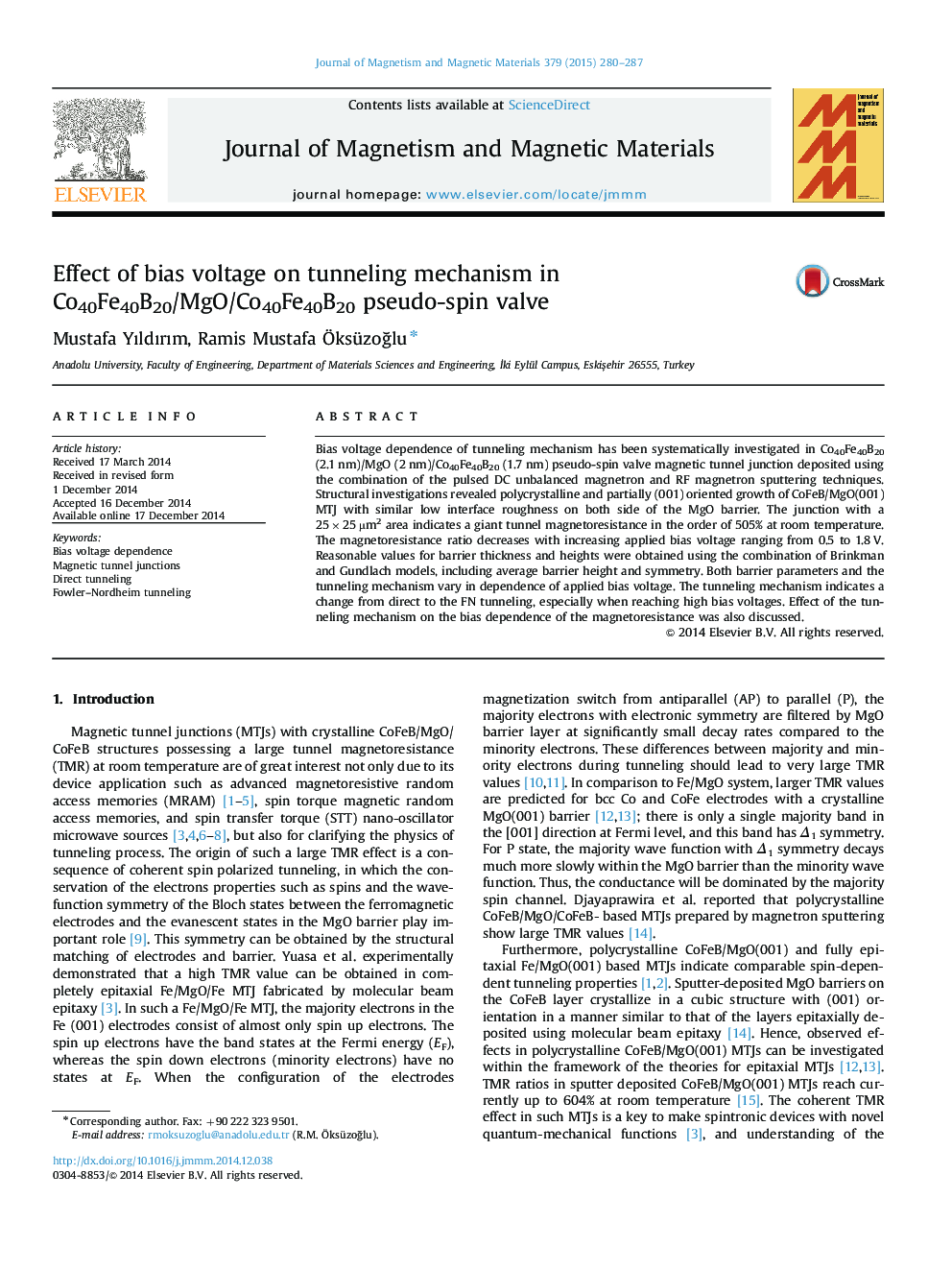| Article ID | Journal | Published Year | Pages | File Type |
|---|---|---|---|---|
| 1799405 | Journal of Magnetism and Magnetic Materials | 2015 | 8 Pages |
•Polycrystalline and partially (001) oriented CoFeB/MgO MTJ with similar interface roughness was produced.•TMR ratio of 505% was obtained at room temperature, decreasing with increasing bias.•Similar interface roughness with low barrier asymmetry results in high TMR ratio.•Tunneling mechanism changes from direct to Fowler–Nordheim for applied biases >0.8 V.•Bias dependence of TMR is correlated with change of the tunneling mechanism.
Bias voltage dependence of tunneling mechanism has been systematically investigated in Co40Fe40B20 (2.1 nm)/MgO (2 nm)/Co40Fe40B20 (1.7 nm) pseudo-spin valve magnetic tunnel junction deposited using the combination of the pulsed DC unbalanced magnetron and RF magnetron sputtering techniques. Structural investigations revealed polycrystalline and partially (001) oriented growth of CoFeB/MgO(001) MTJ with similar low interface roughness on both side of the MgO barrier. The junction with a 25×25 µm2 area indicates a giant tunnel magnetoresistance in the order of 505% at room temperature. The magnetoresistance ratio decreases with increasing applied bias voltage ranging from 0.5 to 1.8 V. Reasonable values for barrier thickness and heights were obtained using the combination of Brinkman and Gundlach models, including average barrier height and symmetry. Both barrier parameters and the tunneling mechanism vary in dependence of applied bias voltage. The tunneling mechanism indicates a change from direct to the FN tunneling, especially when reaching high bias voltages. Effect of the tunneling mechanism on the bias dependence of the magnetoresistance was also discussed.
